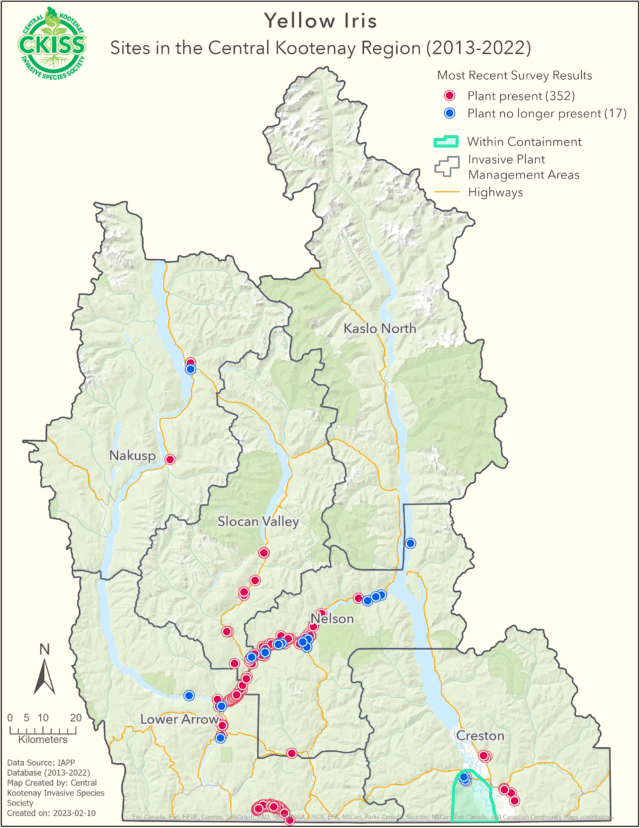Iris pseudacorus
Description
- Native to Europe, Western Asia, North Africa and the Mediterranean.
- In the Iris family.
- Perennial that spreads by seeds and rhizomes.
- Rhizome fragments can break off and form new plants.
- Grows in ditches, ponds, wetlands, riparian areas.
- Flowers resemble garden iris, but are dark yellow.
- Blooms May through July.
- Distribution expanding. Creston Valley Wildlife Management area, Kootenay Lake, Kootenay River, Nancy Greene Lake, Meldeanna Pond, Arrow Lake, Slocan River, Erie Lake, Pend D’Orielle River.
Consequences of invasion
- Colonizes and spreads in dense stands, out-competing native wetland plants and reducing habitat and resources available for wildlife.
- Can make livestock ill if ingested, though it is often avoided by grazing animals. Contact with the resin of the plant can cause skin irritations in humans.
Status in the CKISS region
- Yellow flag iris is classified as Contain on the CKISS Annual Priority List.
- The goal is to contain current infestations and to prevent further spread into new areas.
- It has not been found in the Kaslo Invasive Plant Management Area (IPMA).
- If you notice this plant growing outside of containment, please report it!
- To learn more about how CKISS classifies and manages invasive species, see our Invasive Species Priority Lists page.
Integrated pest management options
- Caution: All plant parts are poisonous-wear gloves when handling Yellow Flag Iris!
- Dig up or clip the seedheads for small infestations.
- Digging and clipping seedheads will have to continue for several years.
- Annual monitoring is recommended.
- Become PlantWise and use Grow Me Instead to choose non-invasive plants for your garden.
Additional resources
- Yellow Flag Iris | CKISS Plant Profile
- Yellow Flag Iris | CKISS Detailed Profile
- Yellow Flag Iris Invasive Plant Alert | District of Saanich
- Yellow Flag Iris Factsheet | Invasive Species Council of BC
- Yellow Flag Iris Factsheet | Metro Vancouver
- Yellow Flag Iris: Best Management Practices | ISCMV
- Yellow Flag Iris Control | King County


